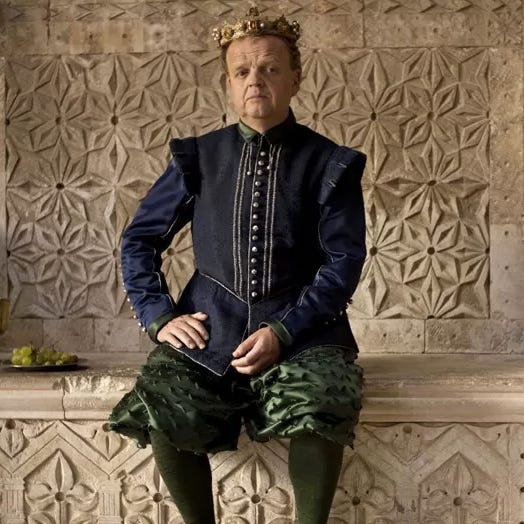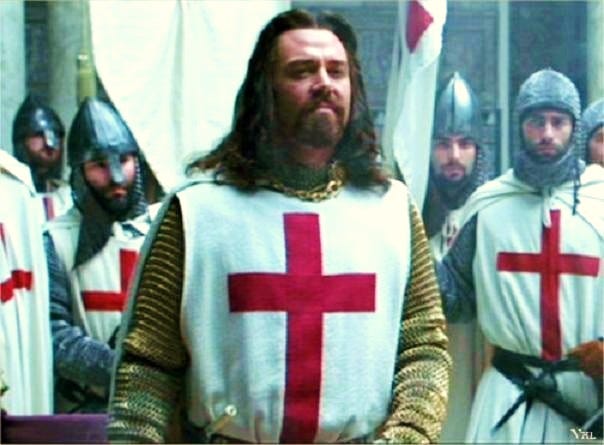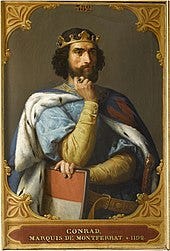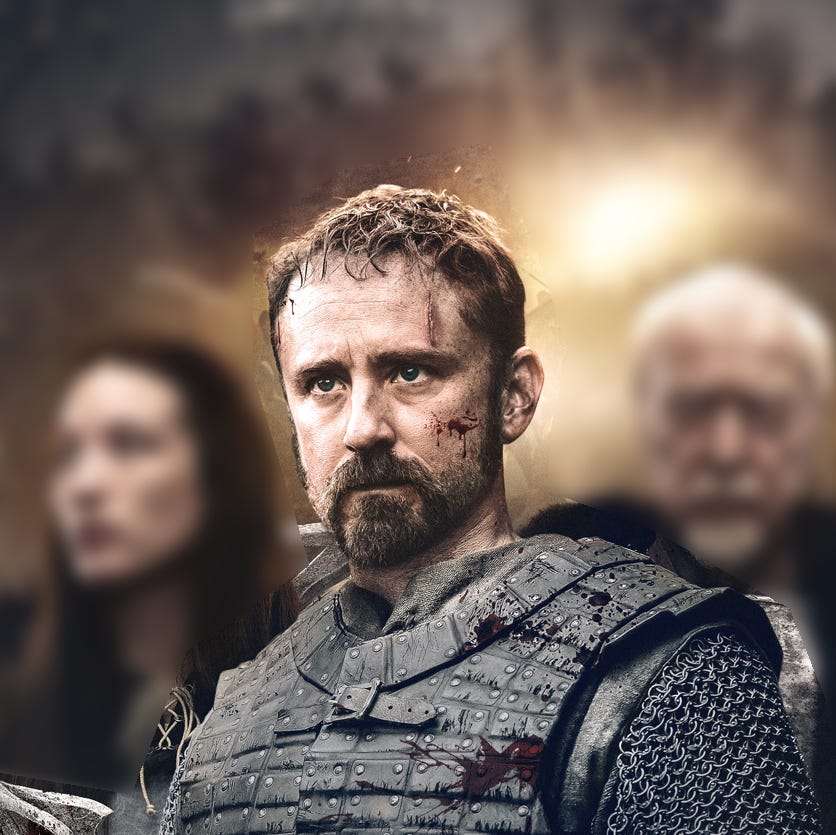[Another song by Blondel, reputedly but dubiously the Troubadour who found Richard imprisoned].
Continuing our post visualizing the cast of characters around Richard, we present Part II.
In part I (click here), we covered Richard, his father Henry II, his mother Eleanor, and his two primary antagonists, Philip and Saladin. Today, his wife, his former fiancee, and more. Purists please note, I have freely taken actors who played a character in Richard’s life and assigned them to other characters :)
Berengaria, his wife and Queen of England (1165? - 1230)
Berengaria was the daughter of King Sancho and Queen Sancha of Navarre, the kingdom to the south of Aquitaine. Hand picked by Eleanor as Richard’s wife to be. There’s little description available of her. She was usually said to be petite with dark hair and dark eyes, and a fine musician. The rather snarky contemporary historian Richard of Devizes described her as “a maid more accomplished than beautiful”. Roger de Templo said “she was a damsel of the greatest prudence and most accomplished manners”. Ambroise called her “elegant and prudent”.
She went on Crusade with Richard, joining him in Sicily, marrying him on Cyprus on May 12, 1191 (she was roughly 26 years old, Richard 34). They never bore children together. Residing in Aquitaine after their marriage, she is sometimes known as "the only English queen never to set foot in the country".
King John, his brother (1166 – 1216)

Perhaps most popularly famous as the evil villain King John in the Robin Hood tales, King John was Richard’s younger brother. He was constantly jockeying for position against Richard, engaging in rebellious behavior against Richard’s designated administrators of England during Richard’s life, and became King after Richard’s death.
Upon Richard’s return from being held prisoner after the Crusade, John begged forgiveness from Richard, which was granted, and John was told that “he treated you very much better than you would have treated him”.
He was nicknamed ‘John Lackland’ by his father because he would inherit no lands due to his older brothers. But Henry would make him Lord of Ireland in 1177, with mixed results. King John’s Castle in Limerick still stands today and is a major tourist attraction.
John is credited with instituting significant judicial reforms during his reign. But a negative personality - pettiness, spitefulness and cruelty - colors how he is perceived. Contemporary historians described him as “sinfully lustful” and impious.
He would eventually lose the continental possessions such as Aquitaine to Philip. His resulting political weakness toward the end of his reign led to a baronial revolt that forced him to sign Magna Carta, one of the first written constitutional steps toward democracy. He died of dysentery while on campaign 1216.
Joanna, Queen of Sicily (1165–1199)
Often referred to as Joan, or Johanna, Joanna became Queen of Sicily when she was married to William II at the age of 12!
There is little surviving description of her but she was said have reddish-brown hair, to have been smart and active, with horse-riding a favorite pastime. She and William would have no children, and on William’s death, Tancred would seize power in Sicily, leading to a conflict with Richard, who would resolve the issue when he came to Sicily in 1190. Richard’s fiancee Berengaria would also come to Italy, and she and Joanna became friends, and ended up on Crusade with Richard. She and Richard were close, which did not stop Richard from offering Joanna in marriage to Saladin as part of a peace pact! This was perhaps done in jest, and the offer never came to fruition. She would also later be married to Raymond, Count of Toulouse.
She died at the age of 33 shortly after the birth of her short-lived son, who was named Richard.
Alice, Countess of Vexin (Alyce, Alys) (1160 - 1220)
Alice of France was the daughter of Louis VII and his second wife Constance (after Eleanor), and the half-sister of Philip II (who was born to Louis and Adèle of Champagne after Constance died).
In 1169 Alice was promised in marriage to Richard and sent to Henry II as Henry’s ward. She was 8 at the time. Her sister Marguerite would marry Henry the Young King, Richard’s older brother.
Alice would eventually be widely rumored to be Henry’s mistress (after she was older), and also to have had a child with Henry. This would have been incredibly stupid on Henry’s part as she was his ward, his son’s fiancee, and the daughter of the King of France. But, Henry had an earlier mistress, Rosamund Clifford, who would have a longer and more documented relationship with Henry, and he may have taken up with Alice after Rosamund died.
Richard would evade marrying Alice for over 20 years, and this was a constant bone of contention between he and Philip. Neither Richard nor his father wanted closer relationships with France. Richard would later use these rumors to outright refuse to marry Alice, effectively buying his way out of the marriage by forcing Philip to accept compensation for the refusal, rather than revealing Alice’s dishonor, thus creating or exacerbating what would be a lifelong feud with Philip.
In 1195 she married William, count of Ponthieu, and had two daughters with him.
Tancred (1138 – 1194)
Tancred, was the illegitimate cousin of King William II of Sicily, who was married to Richard's sister Joanna. Short, dark, and ugly, Tancred's not-so-affectionate nickname was 'The Monkey King'.
When William died, Tancred seized power, and took control of Joanna and her sizable dowry. Richard's first stop on the way to the Holy Lands was Sicily, where he first seized control of Messina, then negotiated a peace with Tancred that restored Joanna's dowry, gained Richard many ships, promised Richard's nephew Arthur in marriage to Tancred's daughter, and left Tancred as King. The Holy Roman Emperor Henry VI would eventually use Richard's ransom money in part to finance a conquest of Sicily, which ended Norman rule in Sicily after Tancred's death.
Isaac Comnenus, Emperor of Cyprus (1155-1195)
After Richard left Sicily he made sail for the Holy Land. A storm arose and blew apart his fleet. He landed at Crete as intended, but the ship carrying Berengaria and Joanna would end up at Cyprus, where Isaac Comnenus had installed himself as Emperor of Cyprus with a forged imperial letter and a troop of Mercenaries. He was not a nice man.
Richard, finding his sister and wife effectively held hostage by Isaac, conquered the island in about 10 days, twice capturing Isaac, the second time after capturing his daughter, after which Isaac surrendered. The second time, Isaac surrendered on condition that Richard not put him in “iron fetters”. Richard agreed, and promptly had chains made of silver and put Isaac in them.
His daughter ended up on Crusade with Richard and eventually to England. Richard took possession of Cyprus, a valuable supply base for the Crusades, eventually selling to the Knights Templar, buying it back from them and giving it to Guy de Lusignan, who together with his descendants would rule Cyprus until almost 1500.
Guy de Lusignan (1150-1194)
Guy was King of Jerusalem by right of marriage to Sibylla of Jerusalem. Constantly engaged in conflict with Saladin, Guy would lead and lose the disastrous battle of Hattin. He would be captured and spend a year in prison. Taken prisoner, he would be brought before Saladin along with a companion, Raynald. Saladin gave Guy water (a sign that he was to be spared), and Guy shared the water with Raynald. Saladin’s mercy did not extend to Raynald and he chastised Guy for sharing his water. Saladin then beheaded Raynald, but let Guy live, saying to Guy, “Kings do not kill other kings”.
The battle also led to the loss of Jerusalem. Guy would be released and then led the siege of Acre until Richard arrived. He was a vassal of Richard’s through his ownership of lands in France, and was Richard’s favorite to become King of Jerusalem again when the city is retaken.
Guy would eventually become lord of Cyprus as a gift from Richard, after Richard and others decided to elect Conrad the next King of Jerusalem (after the battle of Hattin disaster, Guy had little credibility as a leader).
Conrad of Montferrat (? - 1192)
Conrad of Montferrat was one of the major participants in the Third Crusade. He was Guy’s competitor and Philip’s preferred King of Jerusalem. He was generally described has handsome and had strong leadership talent, and undoubtedly cut a more attractive figure than Guy to be King. He informally became King when he married Isabella, and was elected officially in 1192.
Just days later, he would be killed by two assassins, members of the the Hashashin, the medieval Shi’a Islamic order of killers, from whence we get the word assassin. It’s a fascinating story that will get its own blog post in the future.
After this, Henri of Champagne, the nephew of both Richard and Philip, would marry Isabella and become King of Jerusalem. It’s all very inbred, don’t you think?
There’s apparently no surviving description of him with any detail.
Henri of Champagne, King of Jerusalem (1166 - 1197)
Henri of Champagne was Count of Champagne in France (1181-1197), and King of Jerusalem (1192-1197) due to his marriage to Queen Isabella I of Jerusalem, as well as Richard’s blessing. The chroniclers reported Henri to be exceedingly handsome and that Isabella was therefore desperate to marry him; more likely she needed a husband after Conrad’s death to ensure her lands and the safety of her children.
Richard’s nephew (Eleanor was his grandmother), but also the grandson of Louis VII, and thus Philip’s nephew as well, Henri would be at the conflicted center of much of the politicking that happened during the Third Crusade. He would eventually more-or-less side with Richard and be one of his trusted companions throughout the Third Crusade.
Henry died in 1197, aged 31, accidentally falling from a window at his palace in Acre.
Leopold V, Duke of Austria (1157 - 1194)
Leopold of Austria went to the Holy Land in 1191, becoming one of the leaders of the siege of Acre until Richard and Philip arrived.
After the siege was won, Leopold attempted to claim credit (and treasure) by raising his banner (his banner would eventually become the flag of Austria, as it happens), along with Richard and Philip’s. Richard, enraged that such a minor noble would attempt to be on par with him, had his banner dropped, and then he trampled it under his boot (other stories have it thrown into the moat). Leopold, enraged, abandoned the crusade and returned to Austria.
In the sort of turnabout that is too improbable for fiction, when Richard attempted to return home after the Crusades, he was shipwrecked near Austria, and attempting to get home overland, was captured by Leopold’s men, and Leopold them took him hostage, eventually selling him to the Holy Roman Emperor Henry VI.
Leopold would die after his foot was crushed in a horse fall in a tournament. He ordered his foot cut off with an axe, which took three tries by terrified servants. He died shortly thereafter from gangrene.
Little is known of his appearance.
Henry VI, Holy Roman Emperor (1165-1197)
Henry VI, the Holy Roman Emperor, whose territories included much of modern Germany, parts of modern France, and Northern Italy, as well as (eventually) Sicily, and perhaps the strongest state of the Middle Ages, traditionally considered as having inherited power from the Roman emperors.
His father Frederick Barbarossa died on Crusade in 1190, drowning during a river crossing, leaving his son Frederick of Swabia in charge of his crusader forces. After Frederick died, Henry became emperor, and Leopold took control of Barbarossa’s forces in the Holy Land.
Henry was fluent in Latin, a patron of the arts, and as with other nobles in Richard’s time, was a song writer, some of his songs surviving until today.
Leopold sold Richard to Henry, who eventually ransomed him for a massive 150,000 silver marks (3x the revenue of the crown at that time), but not before putting him on trial. As Gillingham recounts the trial:
To all accusations, however, Richard replied so forcefully and persuasively that he won the court round to his side. Even William the Breton, Philip's court poet, was impressed. ‘When Richard replied he spoke so eloquently and regally, in so lionhearted a manner, that it was as though he had forgotten where he was and the undignified circumstances in which he had been captured and imagined himself to be seated on the throne of his ancestors at Lincoln or at Caen.’ Sensing the mood of the meeting, Henry VI dropped his accusations and instead praised Richard, giving him the kiss of peace and promising to bring about a reconciliation between him and King Philip. This scene moved the onlookers to weep with joy. On 23 March Leopold formally gave Richard into the emperor's custody. [But] Kiss or no kiss, he still had to pay the emperor for his freedom.
Henry nearly died in the Erfurt latrine disaster, wherein (I am not making this up), over 60 nobles died at a meeting convened by Henry, when a floor collapsed into a latrine and the nobles drowned in excrement.
Henry died in Sicily. Ironically he was somewhat following in Richard’s footsteps, having taken the cross to go on Crusade, and planning to sail through Messina. Stopping there, he died of illness, perhaps malaria, and was (and is today) buried in Palermo Cathedral.
William Marshal (1146 - 1219)
Often called England’s Greatest Knight, William was a fearsome warrior and tournament champion. Early in his life he was a knight, soldier, and a champion of the tournament (dying, he recalled besting over 500 knights at tournament).
In 1168 he was escorting Queen Eleanor in Aquitaine with his brother Patrick. They were ambushed by Guy de Lusignan (yes, that Guy), but with William’s help Eleanor escaped, though William was taken prisoner. Eleanor would ransom him and take her into his household and he would go on to serve five kings as Marshal (Henry II, Henry the Young King, Richard, John, and John’s son Henry III). After a vow to the Young King he would go on crusade, spending two years in Jerusalem (1183-5).
He served Henry II for many years. At one point, during one of Richard’s rebellions, he unhorsed Richard during battle, perhaps the only person ever to do so. He did not kill Richard, but rather killed his horse, to make a point. After Henry II died, at the funeral, Richard works to make William as loyal to him as he was to Henry. As John Gillingham reports the wonderful episode:
As Richard turned away from his father's body he called over two of the dead king's most loyal followers, William Marshal and Maurice of Craon. ‘So, Marshal, the other day you tried to kill me and would have done so had I not turned your lance aside.’ This accusation wounded William's knightly pride and he replied indignantly that had he wanted to kill Richard, nothing could have stopped him. ‘Marshal, you are pardoned. I bear you no malice.’ Indeed far from punishing William and the others who had stayed with the Old King until the end, and who on this account had awaited his son's arrival in the abbey church with some trepidation, Richard praised and rewarded them. When the chancellor told him that Henry had given Marshal the hand of Isabel de Clare, heiress to the lordship of Striguil in the Marches of Wales, to the county of Pembroke and to the immense lordship of Leinster in Ireland, Richard interjected, ‘By God's legs! He did not, he only promised to do it. But I give her to you now.’ William rushed to Dieppe, fell off a gangplank in his haste to get aboard ship, and married the girl as soon as he was in London. Richard's well-calculated act of generosity had, in effect, made William a millionaire overnight. … This suggests that when Richard made William Marshal a great landowner in South Wales he was alert to strategic geography as well as to the generosity of good lordship.
Thus married at 43 to the daughter of Richard de Clare (the “strongbow” after whom the cider is named), and he became a hugely wealthy landowner as well as a powerful military figure. Richard named him to his council to oversee England in his absence, and William (despite a brief alliance with John) would remain a loyal part of Richard’s crew. He died in 1219, joining the Knights Templar on his deathbed.
Mercadier
Mercadier was a famous mercenary who was in Richard’s service from 1184 until Richard’s death, and with the possible exception of the Crusade, was at his right hand at most times. When Richard was mortally wounded it was Mercadier’s physician who treated him. Legend has it that Mercadier flayed the man (boy) who shot the arrow that killed Richard, even though Richard had pardoned him. He then entered service to Eleanor, and was eventually assassinated by mercenaries in the pay of Richard’s brother King John.
OK I think that’s enough interesting people for one post. If you have ideas for other people in Richard’s life, or your preferred actor/actress, drop a comment!














